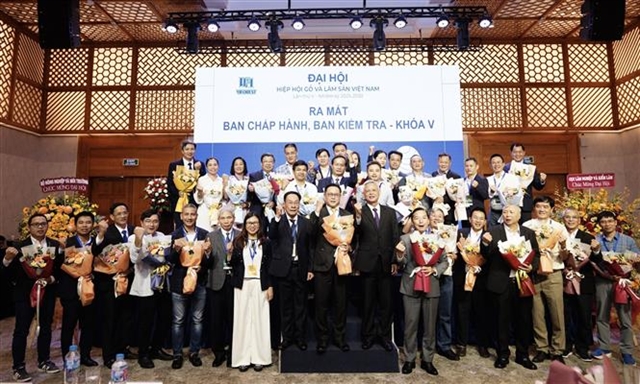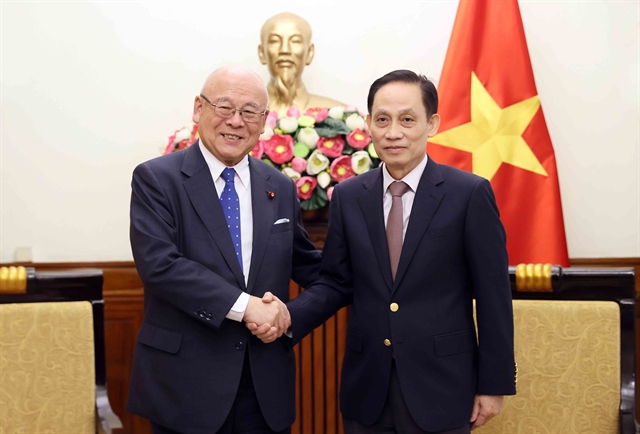 Inner Sanctum
Inner Sanctum
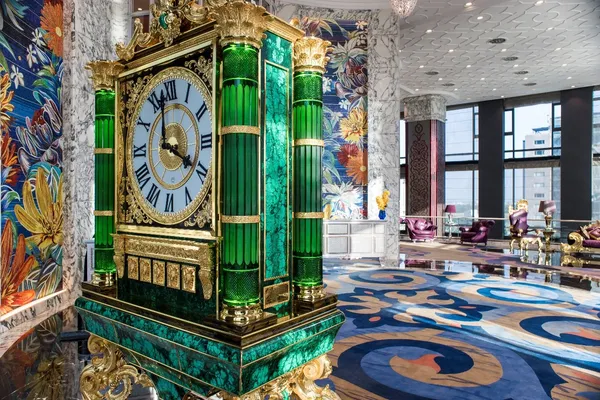
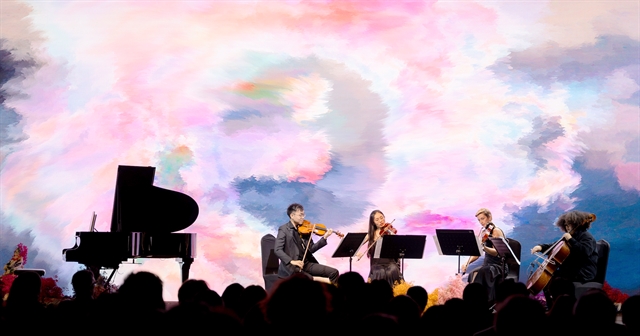 |
| Re.imagine Vol 01 conveyed a multisensory dialogue between tradition and transformation. Photo Re.imagine |
Re.imagine is Việt Nam’s first classical music concert series to fuse creative technology with interactive media, changing classical performance into a living, multisensory dialogue between tradition and transformation. Việt Nam News reporter Trần Khánh An speaks with Trung Bảo, a multidisciplinary new media artist and co-founder of Fustic.Studio about the project.
Inner Sanctum: Your concert series has been selected to open the United Nations’ AI for Good event and the 80th anniversary of the UN in July in Geneva, Switzerland. How did you and the co-founders of Re.imagine feel when you received the invitation?
As the first Vietnamese act selected to open the UN’s flagship AI and sustainable development event, the AI for Good Global Summit, we felt genuinely excited, proud and deeply responsible.
What made Re.imagine stand out, we believe, is how it offers a completely new way of experiencing classical music. The result is something alive and emotional, where musicians are visual storytellers, and the performance is an immersive journey in the language of new media art.
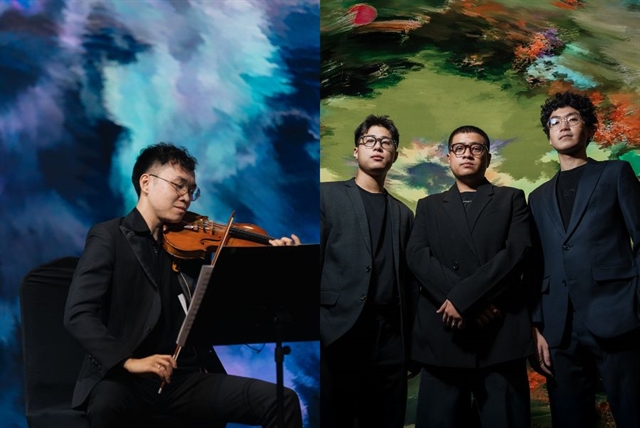 |
| Violinist Nguyễn Thiện Minh (left) and co-founders of Fustic.Studio Trung Bảo, Hải Doãn and Nam Lê (from left to right). Photo Re.imagine |
Inner Sanctum: What brought artist Nguyễn Thiện Minh and Fustic.Studio together to collaborate and share a vision in this project?
Re.imagine was an idea Minh carried for over seven years, waiting for the right moment when artistic alignment, technological maturity and the right collaborators could come together.
That turning point came when he shared the vision with Fustic.Studio, including me, Hải Doãn and Nam Lê. The immediate connection was rooted in a shared desire to evolve classical performance while respecting its essence.
For us, the founders of Fustic.Studio, this collaboration was a natural extension of our mission: using creative technology to shape cultural experiences. With Minh’s deep musical expertise and our background in immersive media, Re.imagine became a convergence of sound, visuals and real-time interaction, which neither side could have created alone.
Inner Sanctum: The name 'Re.imagine' implies redefining. What does this project aim to redefine?
Our goal is to shift the narrative that classical music is distant or reserved for a niche audience, especially in Việt Nam. Rather than seeing classical music as static or formal, we present it as fluid, living and deeply human.
We aim to refine the entire experience: who it’s for, how it’s felt and where it can take place. Instead of a traditional concert, we create a multisensory environment where the audience is immersed in sound, image and emotions like stepping inside a living painting.
It also redefines the role of musicians – rather than simply interpreting sheet music, they take on the role of co-creators, actively shaping visual elements in real time. That dialogue between tradition and transformation is at the heart of Re.imagine.
 |
| Multidisciplinary new media artist Trung Bảo. Photo courtesy of the artist |
Inner Sanctum: How did the interactive technology and visual art generated in real-time work?
We were drawn to real-time generative visuals because they mirror the ephemerality of music. Every note exists only once in time, and we wanted visuals that could respond to that. Our inspiration came from Impressionist art, where light and colour capture mood rather than precision.
We developed a custom system combining live audio analysis, light motion tracking and machine learning. The visuals are not pre-rendered, but respond in real time on stage. It allows the music to be seen as well as heard – a hallmark of new media art.
The system captures two main data streams, audio and motion, and translates them into generative visuals. Contact microphones and ambient mics analyse the music in real time, tracking variables like tempo, articulation, dynamics and pitch. These are converted into visual expressions such as movement speed, colour saturation, layering and distortion.
Light motion tracking captures the performers’ gestures, allowing the visuals to respond to physical expressions such as bowing or posture. These inputs feed into a visual engine enhanced by machine learning models trained on classical painting styles and natural phenomena. The result is a responsive canvas where image and sound move together.
The process of testing and refining this technology was part tech lab, part rehearsal studio, aiming to create a system that felt intuitive to musicians while still being artistically expressive. Through months of testing and feedback loops, we refined the parameters until the interaction felt seamless.
Inner Sanctum: What role do improvisation and the element of surprise play in Re.imagine?
Even though the music is composed and rehearsed, every performance has subtle variations. The visuals respond live to these changes, so a slight shift in phrasing or emotion can completely change the visual outcome.
Each show becomes a unique conversation between sound and image, inviting both the audience and the artist to stay fully present. We believe that surprise is essential to what makes Re.imagine feel alive – a celebration of the unpredictable that lies at the heart of new media art’s generative spirit.
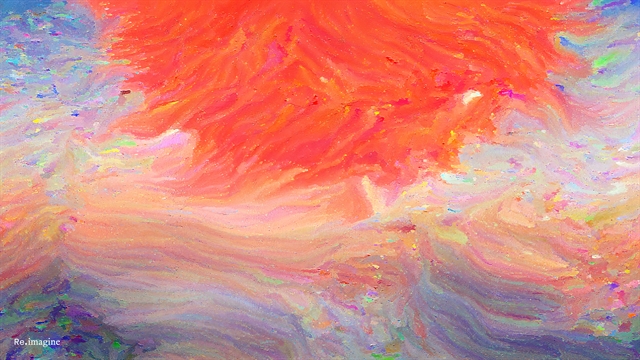 |
| A real-time generative painting was shaped by the artists' audio and movement on stage. — Photo Re.imagine |
Inner Sanctum: What is the concept behind the Resonant Augmenta performance at the AI for Good Global Summit, and how does the AI pianist function within it?
Resonant Augmenta is a piano quintet that explores the evolving relationship between human expression and intelligent systems. Co-composed by Minh and Emil Huckle-Kleve, the piece unfolds in three movements – connection, learning, and co-creation – mirroring a journey of mutual growth between human and machine.
The AI performs as the pianist, not simply as a functional addition, but as a conceptual presence within the ensemble. At times, it feels aligned with the human players; at others, it appears detached or unpredictable.
We wanted to evoke a sense of dialogue, where the audience might ask: Is the machine listening? Leading? Responding? That uncertainty is intentional and lies at the emotional and philosophical core of the work.
Rather than presenting AI as a novelty, Resonant Augmenta offers a glimpse into a future where tradition and technology shape one another not through dominance, but through resonance.
Inner Sanctum: How do you hope the audience will receive it?
At its core, Re.imagine is about honouring classical music’s timeless emotional and structural depth while placing it in a new context that allows more people to connect with it. This back-and-forth between disciplines, music and technology, became part of the creative language of the venture.
We want Re.imagine to feel like an open invitation, a space where anyone, regardless of background, can experience the depth of classical music through new perspectives. If Re.imagine can inspire more artists to explore cross-disciplinary formats or help audiences see classical music as accessible and emotionally immediate, that would be a meaningful contribution.
What excites us most is the possibility of raising expectations. When people experience something that resonates on multiple levels, not just intellectually but viscerally, it shifts how they see the potential of live performance. That ripple effect is where real change begins. — VNS



